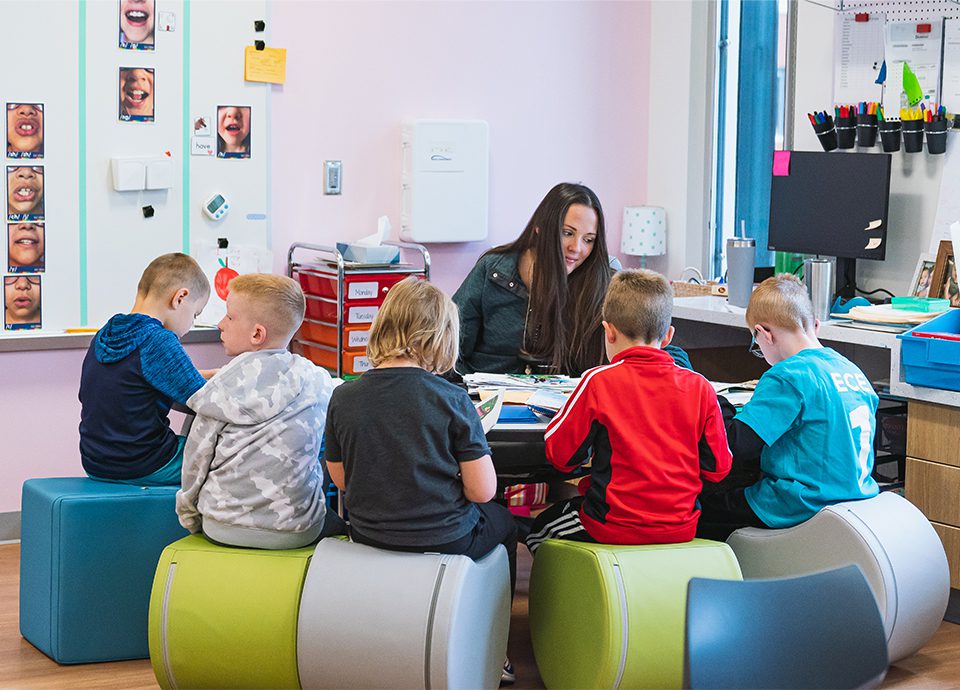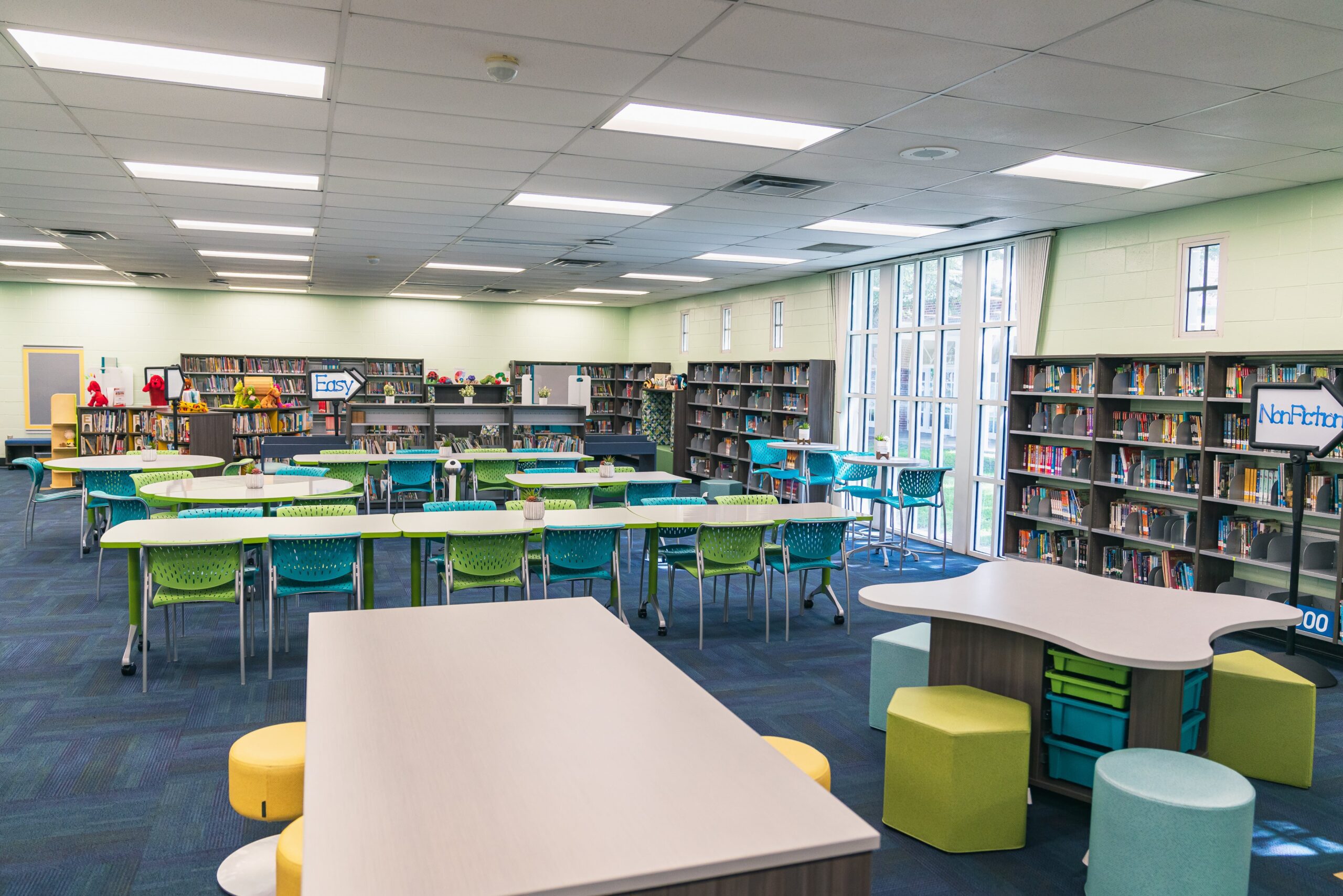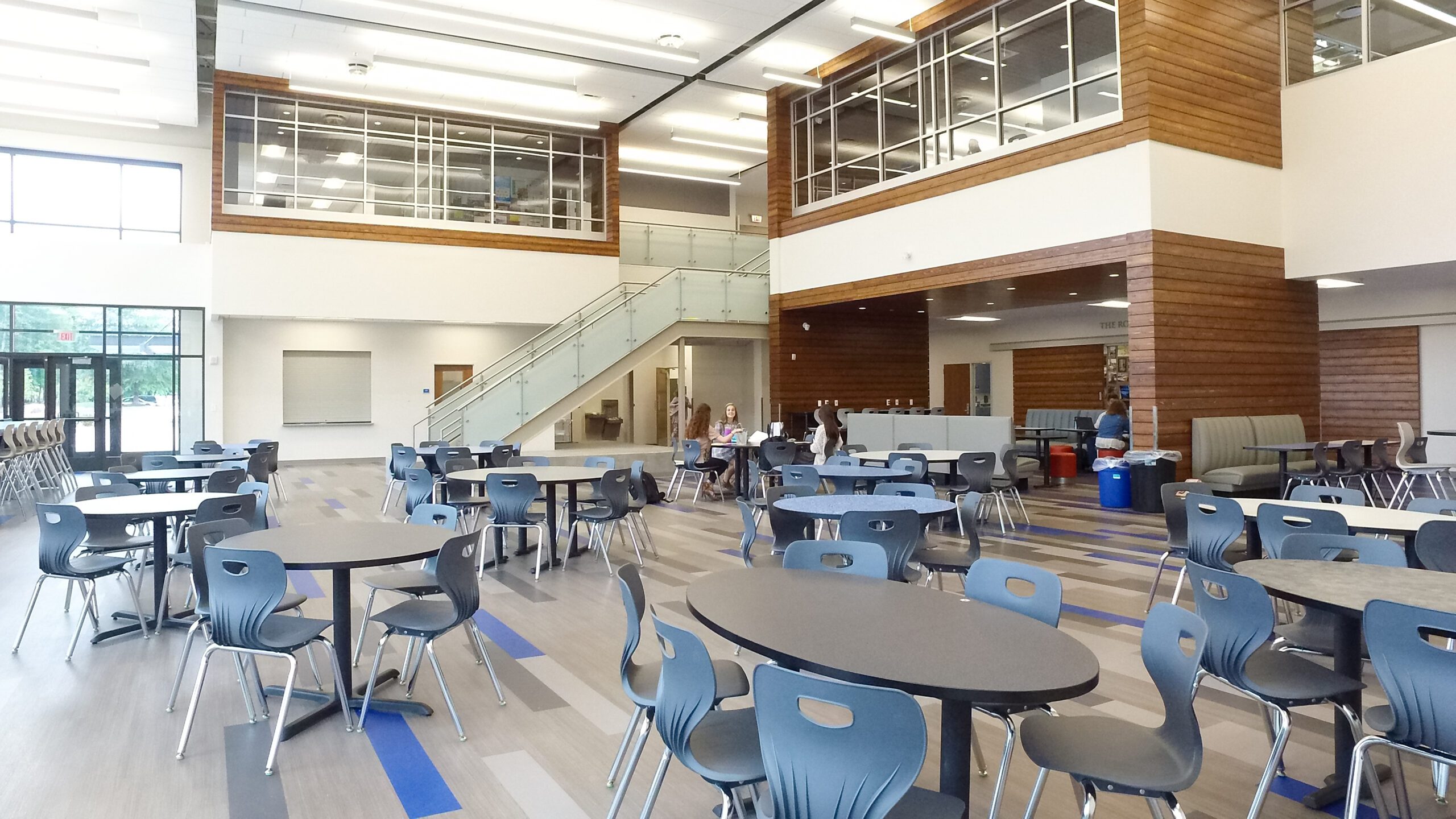
Teaching for Connection: A Blueprint for Student Success
Cultivating academic success is only part of the equation that today’s educators must solve. Equally important is nurturing the social-emotional growth, adaptability, and collaborative skills of their students. With more than 75% of employers stating these are the types of traits they look for in new hires, it’s time to reevaluate how we approach teaching and learning in today’s classrooms.
Meteor Education’s ProSocial Learning Framework® enables educators to promote these skills within their students, acting as a powerful roadmap for creating learning environments where curiosity, connection, and reflection thrive.
In this article, we’ll explore the four domains that comprise this Framework, provide examples of how teachers can implement them to enhance student experiences, and the role that physical spaces play in enabling these concepts to take root.

Inspire Curiosity
What It Means
Teachers should spark interest and emotional engagement by modeling enthusiasm, sharing personal stories, and tying learning to real-world relevance. When students see their teachers as passionate learners and storytellers, they’re more likely to feel personally connected with the content and motivated to explore further.
In Practice
A science teacher kicks off a unit on ecosystems by sharing a story about their childhood fascination with tide pools, showing photos and asking students what natural environments they’re curious about.
When teachers model curiosity and connection, students are inspired to explore and collaborate.
Activate Curiosity
What It Means
Educators should create real-world inquiry experiences that challenge students slightly beyond their current abilities and prime them to be collaborative with their unique strengths. This empowers students to take ownership of their learning while building confidence and communication skills through respectful dialogue with their peers.
In Practice
In an English course, students are given roles (summarizer, questioner, connector, etc.) to explore the content and themes of a novel, learning from each other’s perspectives and interpretations.
Connect Learning
What It Means
Students should work together to link new concepts to prior knowledge and actively reinforce understanding through collaborative practice, while teachers provide timely, constructive feedback that supports both individual growth and team progress.
In Practice
While working on a new math unit, groups are given a set of solved problems — some correct, some with errors. They must discuss and identify mistakes while explaining how these errors could be attributed to past misunderstandings. The teacher circulates, offering feedback and highlighting strong mathematical thinking.
Learning sticks when students connect new ideas to what they already know through meaningful collaboration.
Reflect for Next Steps
What It Means
Teachers should encourage students to reflect on their process and academic growth to identify next steps in both learning and social-emotional development, all while assessing team outcomes and individual understanding to guide future instruction.
In Practice
In a whole-class or small-group setting, students participate in a reflection circle where they share insights about their learning process, challenges they faced, and how they supported one another. The teacher facilitates and captures key themes to inform next steps.

The Role of Environment in ProSocial Learning
To successfully implement these four domains, the physical learning space must support it. The rigidity of traditional, rowed classrooms can often limit collaboration, movement, and connection, all of which are key ingredients in the ProSocial Learning Framework. When students are immersed in flexible, comfortable, and naturally collaborative arrangements, they’re more likely to engage meaningfully with their peers, teachers, and content.
A well-designed classroom supports collaboration, fosters curiosity, and allows for deeper, more connected learning.
The right furniture and classroom arrangement can make a teacher’s role more intuitive, gifting them the opportunity to be responsive and engaged right alongside their students. Ultimately, a ProSocial Learning Environment® amplifies learning, positioning students for success both academically and socially.
Conclusion
Utilizing these four domains, educators can lay a foundation of deeper engagement and lasting growth. The ProSocial Learning Framework can help prepare students for a future where academic success by itself will not be enough. By creating environments that nurture their development, students will have the tools needed to thrive in the classroom and beyond.
prosocial in the real World
Having access to research and providing our team with innovative concepts pushed the discussion beyond simply filling a space with furniture, to utilizing furnishings to enhance the learning of students.
– Brady Dickinson, Ph.D.
Superintendent
Twin Falls School District

Prosocial learning
A ProSocial Learning Framework for Success
Ready to see how the ProSocial Learning Framework can reshape your learning environments? Check out our whitepaper for a full overview!